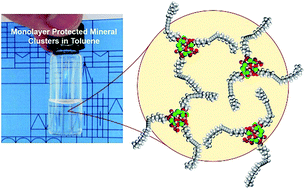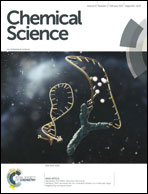A general strategy for colloidal stable ultrasmall amorphous mineral clusters in organic solvents†
Abstract
While nature exerts precise control over the size and chemical composition of minerals, this is still a challenging task for artificial syntheses. Despite its significance, until now, there are still no reports on colloidal mineral nanoparticles in the subnanometer range. Here we developed a general gas diffusion strategy using 10,12-pentacosadiynoic acid as a ligand and ethanol as a solvent to fabricate stable amorphous mineral clusters with a core size of less than 2 nm. First discovered for CaCO3, the method was successfully extended to produce monolayer protected clusters of MgCO3, SrCO3, Eu2(CO3)3, Tb2(CO3)3, Ce2(CO3)3, Cax(PO4)y, CaC2O4 and their hybrid minerals, CaxMgy(CO3)z and Cax(CO3)y(PO4)z. All the mineral clusters can be well dispersed in organic solvents like toluene, and are stable for a long period without further crystallization. Our work paves a way for the artificial synthesis of colloidal mineral clusters, which may have various uses in both fundamental research and industry.


 Please wait while we load your content...
Please wait while we load your content...